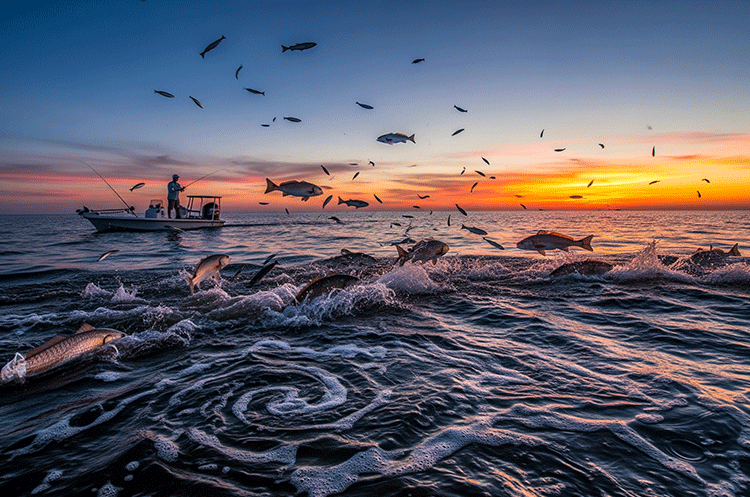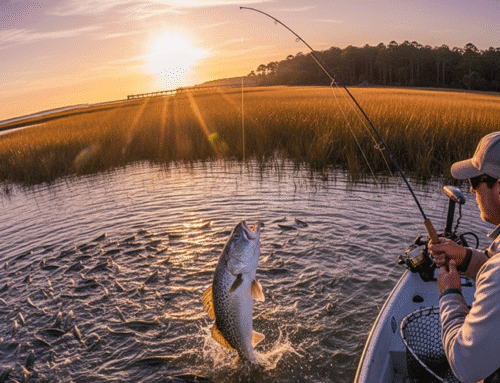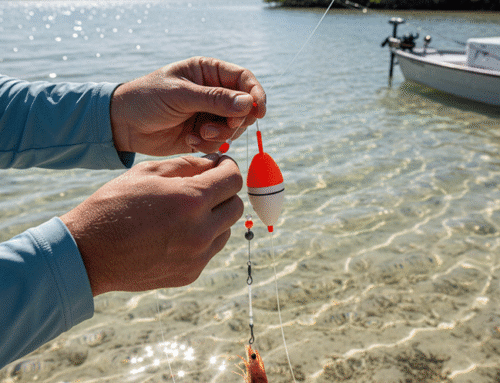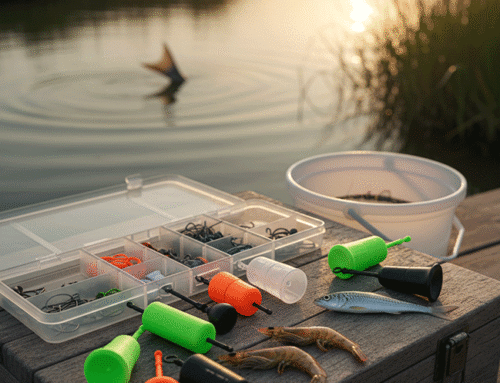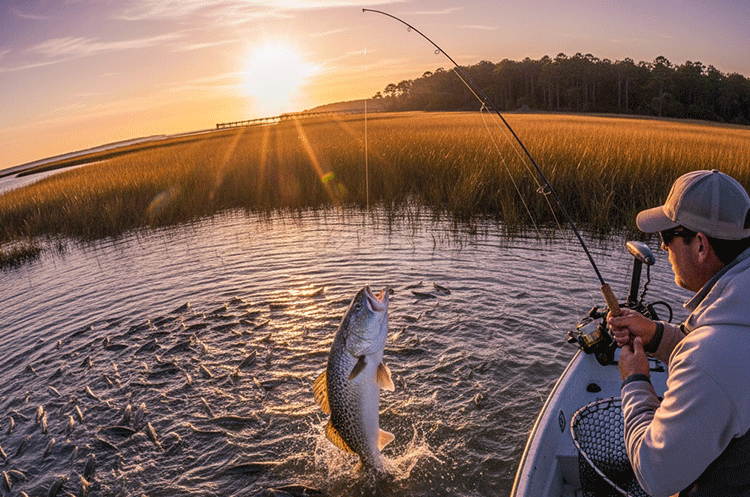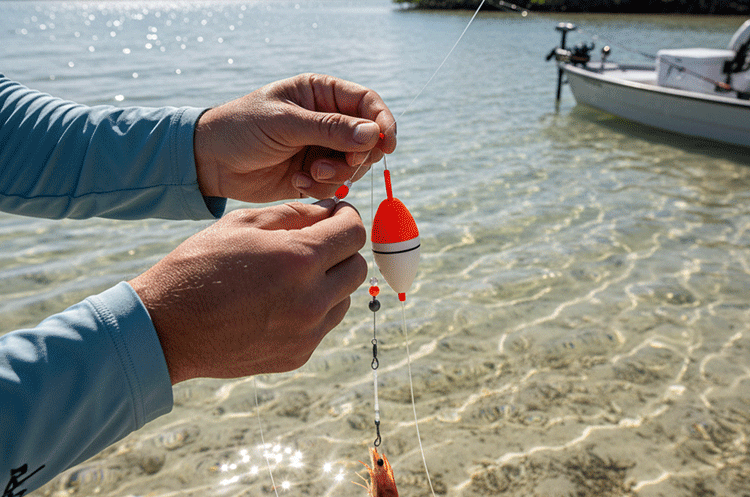Understanding Tides and Weather for Inshore Fishing Success
Inshore fishing offers some of the most exciting and accessible angling opportunities, but consistent success often hinges on a deep understanding of two critical environmental factors: tides and weather. These dynamic elements profoundly influence fish behavior, feeding patterns, and habitat preferences. By learning to read and react to them, anglers can significantly enhance their catch rates and overall enjoyment on the water.
The Impact of Tides on Inshore Fish Behavior
Tides, driven by the gravitational pull of the moon and sun, dictate water movement in coastal areas. This movement is the lifeblood of inshore ecosystems, triggering feeding frenzies and concentrating baitfish and predators alike. Understanding the different tidal phases is paramount:
- Moving Water is Key: Most inshore species bite better when the water is moving, whether it’s incoming or outgoing. This current stirs up nutrients and disorients baitfish, making them easier targets for predatory fish.
- Incoming (Flood) Tide: As the tide rises, it brings in cleaner, often cooler water from the ocean, pushing baitfish into shallower areas like grass flats, estuaries, and shallow bays. This is often a prime time for species that patrol these flooded zones in search of food.
- Outgoing (Ebb) Tide: As the water recedes, it sweeps baitfish, shrimp, and crabs out of their shallow hiding spots and concentrates them into deeper channels, cuts, and drop-offs. Anglers often find success targeting the mouths of estuaries, inlets, and passes during this phase, as game fish position themselves to ambush prey.
- Slack Tide: This is the brief period when the tide is neither coming in nor going out, and water movement is minimal. Fishing can slow considerably during slack tide due to reduced current and bait activity. However, in certain shallow areas, especially during low-light conditions, fish might still feed actively.
Always consult local tide charts before your trip to plan your fishing around the most favorable moving water periods for your target species.
Decoding Weather Patterns for Optimal Fishing
Beyond tides, weather plays a significant role in determining inshore fishing success. Fish are highly sensitive to changes in atmospheric pressure, temperature, wind, and light levels.
Wind: Direction and Speed
- Onshore Wind: Blowing from the ocean to the land, onshore winds can push baitfish closer to shore, making them accessible to pier and shoreline anglers. However, they also tend to increase chop and muddy the water, which can make sight-fishing difficult and deter some bottom feeders.
- Offshore Wind: Blowing from land to sea, offshore winds often flatten the water, improving clarity and making it easier for bottom feeders to forage. However, they can also push bait further offshore, making pelagic species harder to find inshore.
- Ideal Wind Speed: A light breeze of 5-15 knots is often considered ideal, as it creates some surface disturbance without making casting or boat handling too difficult. Winds above 20 knots can significantly challenge inshore fishing.
- Wind Direction Specifics: An east wind often brings stable, humid conditions favorable for longer feeding periods, while a west wind can signal a changing front and a slower bite.
Barometric Pressure: The Unseen Force
Fish sense changes in barometric pressure through their swim bladders. Understanding these shifts can predict feeding activity:
- Falling Pressure: Typically occurs before a storm and often signals an active bite. Fish tend to feed aggressively as pressure drops, so this is a prime time to be on the water.
- Rising Pressure: After a weather front passes, barometric pressure rises. This period, often lasting 24-48 hours, can result in a slower bite as fish readjust to the new conditions.
- Steady Pressure: When barometric pressure remains stable for an extended period, either high or low, fish tend to be more stabilized and feed aggressively.
Temperature and Light Levels
- Water Temperature: Directly impacts fish metabolism and activity. In warmer months, fish are most active during cooler parts of the day (early morning, late evening). In colder months, seek out sunny, shallow areas in the afternoon where the water has warmed. Rain can also cool water temperatures, stimulating lethargic fish during hot spells.
- Cloud Cover and Sunlight: Overcast skies reduce shadows and make fish feel safer to roam and feed across a wider area. Bright, sunny days can push fish into deeper or shaded areas where they feel less exposed. Dawn and dusk, with their low light conditions, are universally recognized as prime feeding times.
Putting It All Together for Success
Successful inshore anglers don’t just react to conditions; they anticipate them. Develop a habit of checking local marine forecasts and tide charts before every outing. Keep a detailed fishing log, noting the tide stage, wind direction and speed, barometric pressure, water temperature, and fish activity. Over time, you’ll identify patterns unique to your local waters, allowing you to fine-tune your strategies.
Remember, flexibility is key. While ideal conditions exist, being adaptable to changing tides and weather will consistently put you on more fish. Embrace the challenge, learn from every trip, and enjoy the dynamic world of inshore fishing.
For more in-depth insights into local fishing techniques, explore our Fishing Articles and stay updated with the latest Fishing Reports.

Topsail Fish | Topsail Island Fishing Guides | Topsail Island Fishing Captains | Topsail Island Fishing Charters | NC Wildlife Resources Commission

